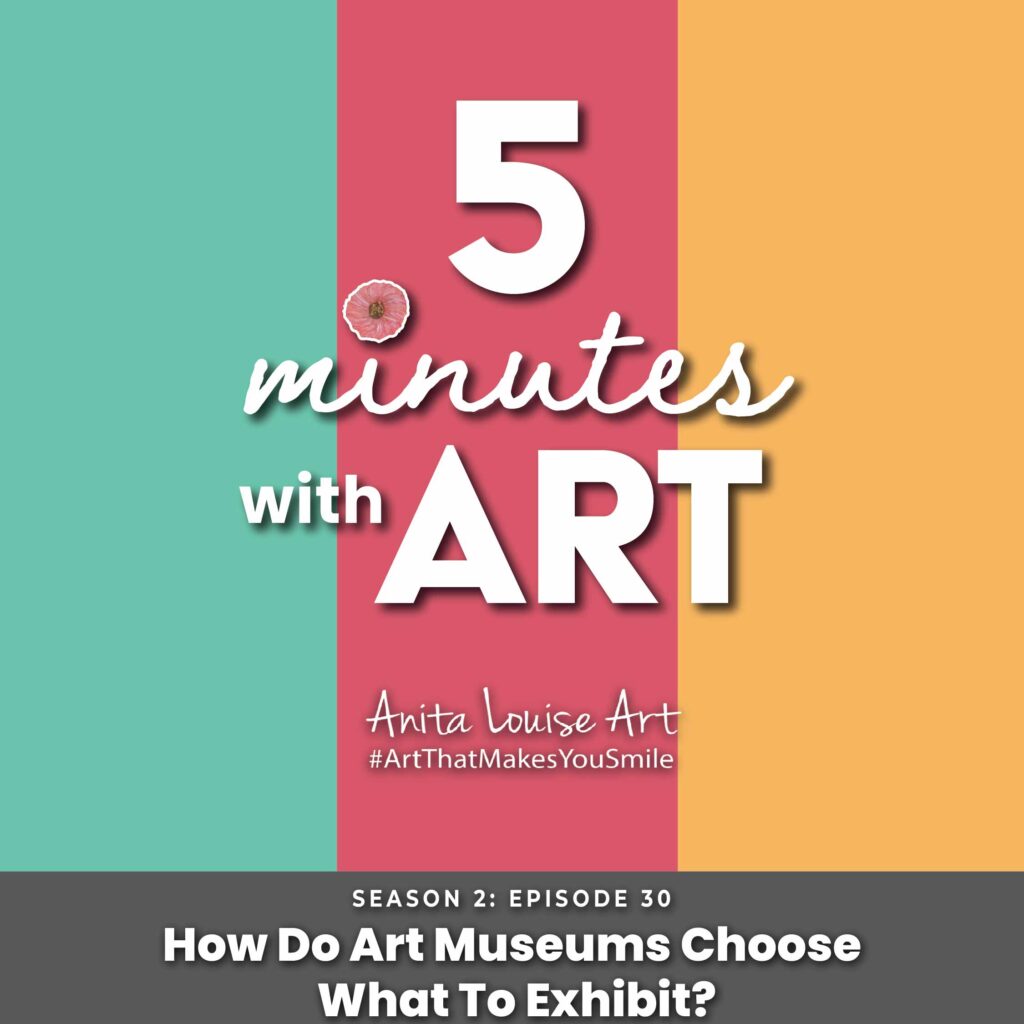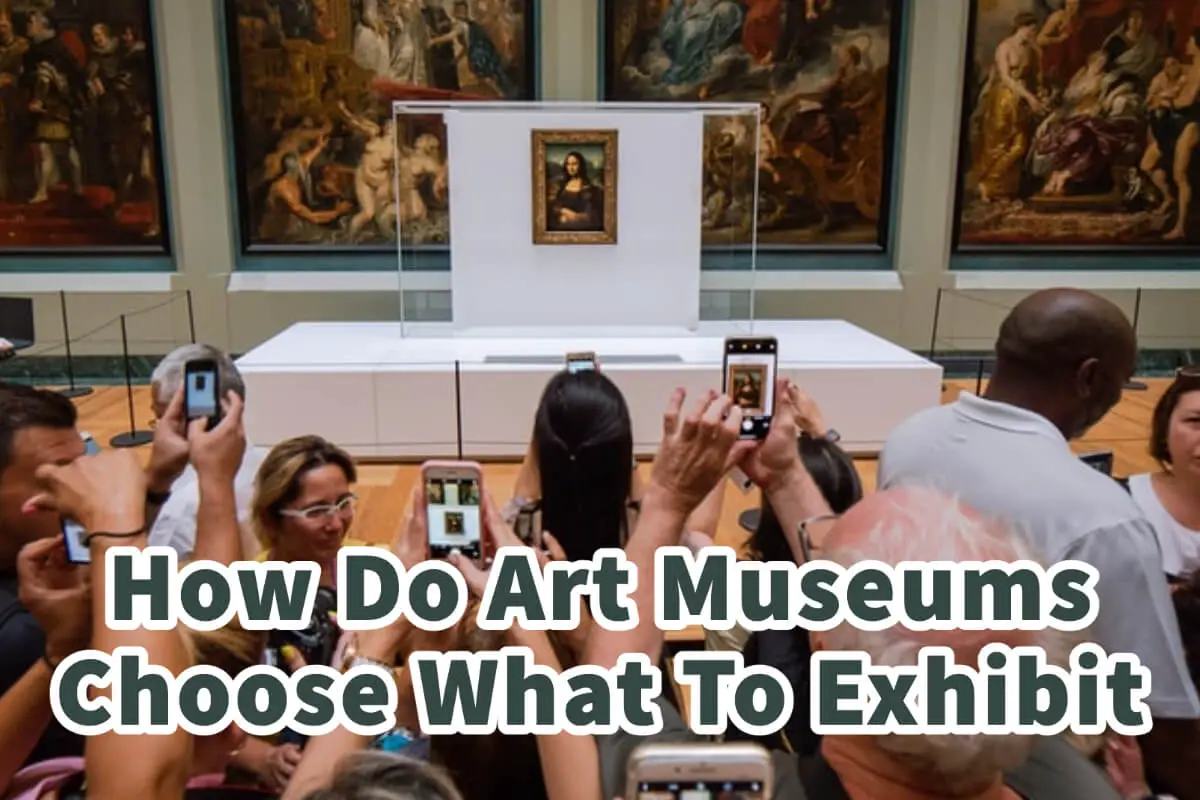As an art museum lover, I am always amazed at how art museums can choose such unique works of art to exhibit. I realize it is probably not as easy as they make it look.
Art museums choose what they want to exhibit because of costs, budget, and space restraints. They want to show art that the public wants to see and exhibitions the people are willing to pay an entrance fee to attend. A museum also exhibits those works of art that align with its mission and vision.
Table of Contents
How Art Museums Choose What To Exhibit
Art museums play a pivotal role in shaping our cultural landscape by carefully selecting and curating exhibitions that engage and inspire audiences. The process of choosing what to exhibit within the hallowed walls of these institutions is a complex and multifaceted endeavor.
It requires a delicate balance between historical significance, artistic merit, thematic relevance, and the diverse interests of visitors.
Read on as we explore how art museums choose what to exhibit.
Budget Restraints
Curators for an art museum decide what to show in the museum due to cost and budget restraints. Every exhibition will cost some money, even if it is permanent.
An art museum must be sure they have the available funds to correctly show the artworks in their museum.
A museum is like any other type of business; they have cash restraints. There are still cash restraints even if they receive some public funding and charge entry fees.
A museum must use its limited cash wisely. We put down money as number one for an art museum to decide what they will exhibit. What currency they have available is a huge determining factor for their overall art exhibition strategy.
Public Interest
The art exhibition must be something that the public would like to see. The show will fail if the public is not interested in the art or the artist they are exhibiting.
An art museum like the Lourve in Paris is so successful because more than 6 million people a year will visit the Lourve to see Leonardo Da Vinci’s famous Mona Lisa painting. Many people only buy a ticket to the Louver to see this one single painting.
When viewing the Mona Lisa at the Louvre, you can expect to find people trying to push and shove their way to get closer to the painting. People are lined up at the Lourve doors, ready to run in to see the Mona Lisa painting as soon as the Lourve opens.
When you visit the Louvre in Paris, you can see crowds around the Mona Lisa painting, while other exhibits are not as crowded. The Louvre’s Mona Lisa painting is a huge attention-getter and money-maker for the museum.
The success of an art museum is like many other things in life; the success of the art museum depends on the public interest. Without the public interest in an art exhibit, the museum and the show will not be successful.
Today many museums have brought some entertainment quality to the exhibits. They may have specific areas within the museum where they will show digital or other kinds of art because they want to be able to draw people into the museum and keep their attention while at the same time educating the public about the art.
Space Restraints
Art museums have space restraints from everything from exhibition space to storage space.
Most museums will look at an exhibition and decide if they have the space for the show. If the temporary exhibition space requirement is too large, they may not want to take space away from the permanent exhibition.
Curators must choose carefully what and where they will exhibit the works of art. Besides the exhibition space, museums must also look at if they have available storage required for the art pieces they are not showing. All these space restraints must be considered carefully.
Museum’s Mission and Vision
Like many other institutions, an art museum will have a mission and a vision for what they exhibit and why. Some museums may have a particular task and idea from what period of art or even artists’ works they show.
Frida Kahlo has a museum dedicated to mainly showing her art and life. Georgie O’Keeffe, Norman Rockwell, and Jackson Pollock also have art museums that will show mainly their work. These art museums specific to an artist, may or may not show the works of other artists.
The Tate in London aims to “increase the public’s enjoyment and understanding of British art from sixteenth century to the present day and of international modern and contemporary art.” The Tate has a specific type of art to show to the public; the Tate will base their exhibitions upon this mission statement.
A museum like the Solomon R. Guggenheim Foundation and Museum has a mission to “collects, preserves, and interprets modern and contemporary art, and explores ideas across cultures through dynamic curatorial and educational initiatives and collaborations.” The Guggenheim has a particular mission that they follow for their exhibitions.
Both the Tate and Guggenheim may have similar art exhibitions, but many are not the same. The Tate in London focuses on s British artists, and the Guggenheim focuses mainly on modern and contemporary art.
Like any other kind of business, an art museum usually focuses on something they will focus their exhibitions on. Even the best museums in the world will have some restraints on cash, space, and what the public wants to see exhibited at their museum.
For an art museum to put on an art exhibition is a costly investment. When an art museum decides to exhibit something permanently or temporarily, much planning, thought, and promotion will go into the exhibit—determining what and how to display art in a museum is usually a team effort.
Listen To Our Podcast About How Do Art Museums Choose What To Exhibit? Below or by clicking here.

If you are interested to see any of my art, you can find out more by clicking here. If you are interested in what inspires me and my paintings, you can discover more by clicking here.
We have a free newsletter and would love you to be part of our community; you can subscribe to the newsletter by clicking here. If you have any questions, I would be happy to talk to you any time. You can reach me, Anita, by clicking here.
Subscribe to our Anita Louise Art YouTube Channel filled with great videos and information by clicking here.
Frequently Asked Questions
Why do art museums have limited space for exhibitions?
Art museums often have limited space due to architectural constraints, the size of their physical location, or the need to allocate space for other purposes such as administrative offices, storage, or conservation labs.
How do art museums decide which artworks to exhibit?
Art museums consider various factors when selecting artworks for exhibition, including their relevance to the museum’s mission and vision, the quality and significance of the artwork, public interest, and the availability of the artwork for loan or acquisition.
Why do art museums prioritize exhibitions that align with their mission and vision?
Art museums have a specific mission and vision that guides their activities. By focusing on exhibitions that align with their mission, they can educate and engage the public in ways that reflect their core values and goals.
Why do art museums consider costs and budget when choosing exhibitions?
Art museums operate within budgetary constraints and need to carefully allocate their financial resources. They consider the costs associated with acquiring or borrowing artworks, preparing and installing exhibitions, marketing, and other operational expenses.
How do art museums determine what the public wants to see?
Art museums gather information about public preferences through visitor surveys, feedback forms, social media interactions, and market research. They may also consider the popularity of certain artists, art movements, or exhibition themes in the broader art community.
Why do art museums charge entrance fees for exhibitions?
Entrance fees help art museums cover their operational costs, including exhibition expenses, maintenance, staff salaries, and educational programs. Charging fees allows museums to maintain their financial sustainability and continue providing enriching experiences for visitors.
Can art museums accommodate all the artworks they receive or wish to exhibit?
Art museums have limited physical space and cannot accommodate all the artworks they receive or wish to exhibit. They must make curatorial decisions to ensure a balance between displaying a diverse range of artworks and maintaining a cohesive and engaging exhibition experience.
How often do art museums change their exhibitions?
The frequency of exhibition changes varies among art museums. Some museums rotate their exhibitions on a quarterly or annual basis, while others have longer exhibition durations. It depends on factors such as the size of the museum, the availability of new artworks, and logistical considerations.
Related Questions
11 Virtual Art Museum Tours That Will Cost You Nothing
Every artist should looMany of the world’s great art museums, and galleries offer virtual tours of their museum or part of the museum. That is a great way to be able to see many of the world’s finest art museums right from the comfort of your home.
By clicking here, you can learn more by reading 11 Virtual Art Museum Tours That Will Cost You Nothing.
The Important Role Of Art Museums In The Art World
An art museum will help to collect and preserve works of art. They also interpret the art and help to educate us all about art. Many art museums will have programs that will allow you to even experiment with different types of art. The core role of an art museum is to inspire us about art.
You can discover more by reading The Important Role Of Art Museums In The Art World by clicking here.


